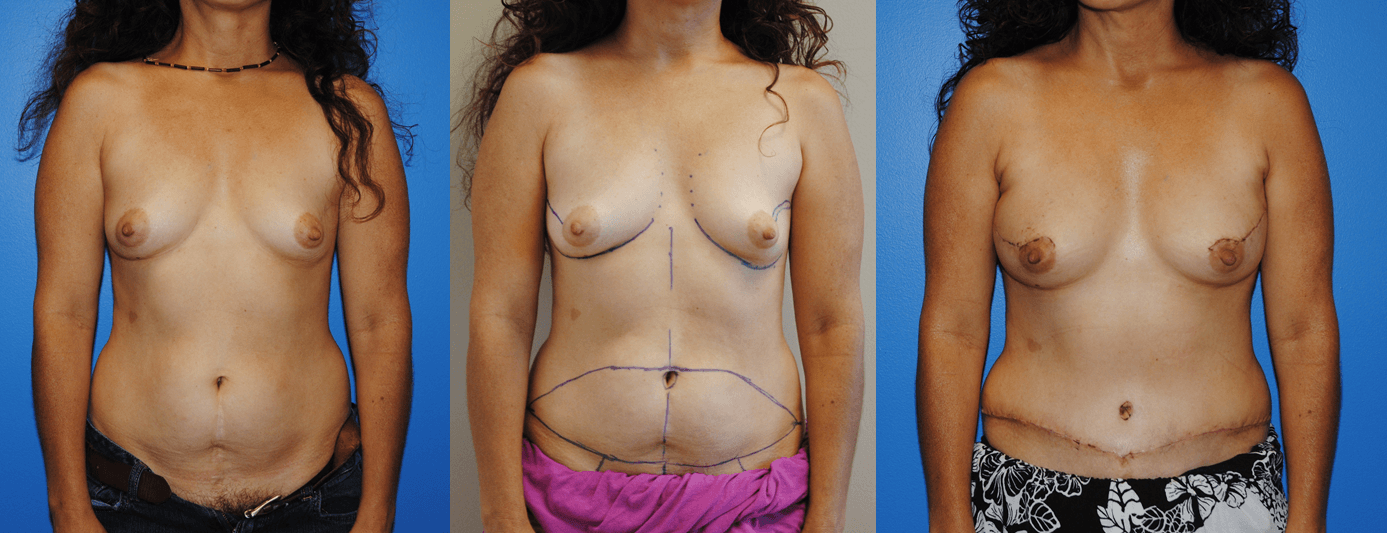We are seeing more women in our office who are choosing to undergo breast reconstruction following mastectomy with their own body tissue. We are also noticing an increasing number of women, who, when appropriate candidates opt to spare their nipple areola complexes following mastectomy.
When the skin and breast tissue are removed following mastectomy, the skin and fat from the abdomen can be transferred to the chest to recreate the breast mound. The skin and fat from the abdomen has its own blood supply from the deep inferior epigastric artery and vein which is isolated and then connected to the blood supply in the chest. The vessels utilized for recipient vessels in the chest included the internal mammary artery and vein or the thoracodorsal artery and vein.
Patients typically ask what they are going to look like post-operatively. I tell them that it typically takes 6 months to one year for scars to fade and soften significantly and then continue to soften thereafter. At approximately one month, scars tend to be the thickest and dense, but they improve.
The DIEP flap breast reconstruction pictures above shows a patient pre-operatively, the operative markings, and then approximately one month post-operatively after bilateral DIEP flap breast reconstruction. I typically tell patients that with autologous breast reconstruction, the reconstruction lasts the lifetime of the patient. That is, there is no need to remove or replace implants, a low risk of infection, and a zero probability of capsular contracture. I find that the overall satisfaction rate with this method of breast reconstruction is high.



Leave a reply